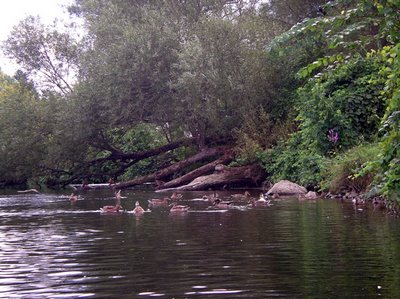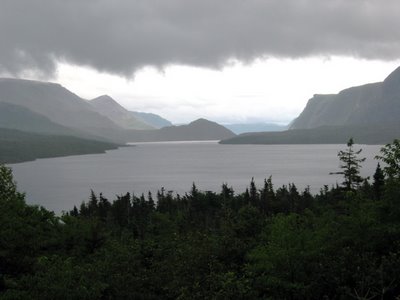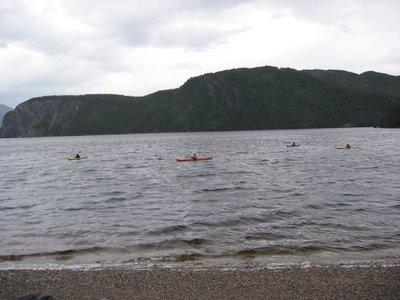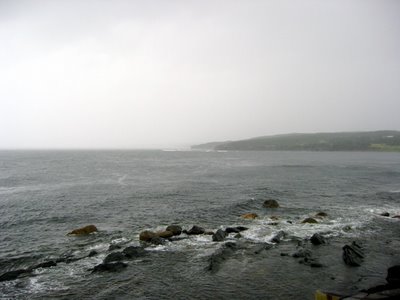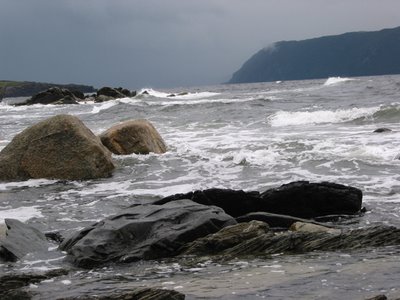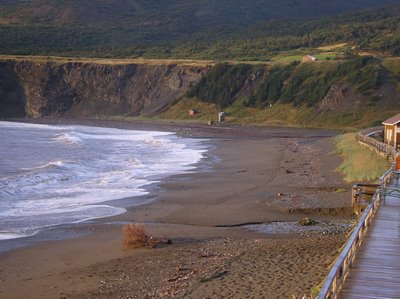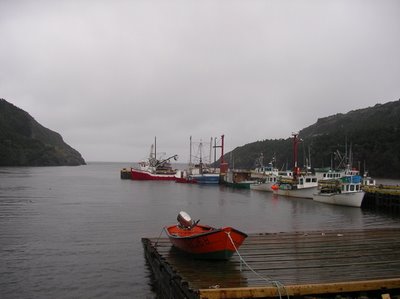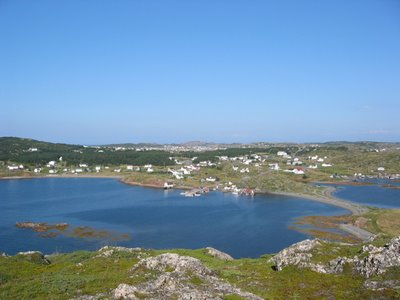
We often just parked the RV right on or overlooking a beach for the night, but in Twillingate we booked into an RV Park on the south side of the island and paid the fare. Laundry facilities and electrical hookups were the reason this time. Once parked, we decided to walk out on the nearby headland to get a view of the place. Walking out, we enquired from a local resident whether it was possible to hike all the way out beyond the houses as the height of land seemed to be an island from where we were standing. We were told, "Sure b'y, go wherever ya like. Dere's nowhere we don't go. It's all free for walkin'! Walk right through a house if ya like, nobody's gonna say nodding to ya!" Sometimes the openness and friendliness of Newfoundlanders can leave you thinking you've somehow left the planet you were born on and arrived at a place were people were created the way they should have been in the first place. It may not be that way if you live in Newfoundland and have to put up with the winter and the hardships which exist for many, but it was a wonderful experience being a visitor. We had some difficulty understanding the Newfoundland dialect and frequently asked people to repeat what they'd said. I suspect many Newfoundlanders believe that people from 'away' are almost all hard of hearing as they so frequently get asked to repeat what they've just said in the plainest way possible!
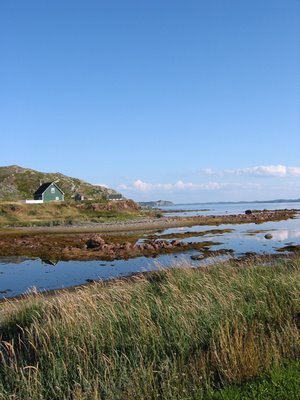
From the top of the hill it was obvious we were in a kayakers paradise. I don't understand how people can possibly make it all the way around Newfoundland in a single season of paddling. I would need at least a year to explore all that this area alone has to offer. Of course the glorious weather while we were there helped, but the itch to get a boat in the water and begin exploring all the coves and 'tickles' was unbearably strong. I wasn't alone wanting to launch. I group of kayakers all over 50 years of age was camped in the nearby provincial Park doing exactly that. They expected to be in the area for at least a couple of weeks.

I suppose every paddler visiting Twillingate sees this lighthouse from the water as they paddle the area. It's a big red beauty sitting atop an immense mass of grey rock jutting forcefully out to sea, with a long finger of shoal rocks thrusting out even further to catch the unwary. It was a wonderful sight on the calm evening we were there, but I can only imagine it on a stormy day! There were no landing spots visible anywhere forcing anyone in a small boat to be tough, skillful and resourceful as they made their way by.

Another view from near the lighthouse, this time looking westward. On the water below the light, many local people were out fishing for cod, the first time in years people have been permitted to catch fish for their own table. We talked to some as they came in. They were happily cutting up and fileting their catch on little tables, right on the beach, skillfully removing the tongues and cheeks considered delicacies, while families joked and laughed and seagulls floated just offshore, awaiting their share. It was a special event, one going back to days some years ago when fishing was a way of life for nearly everyone, reminding people of when times were good.
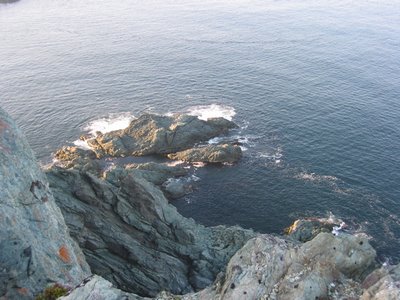
These rocks are some that lie below the light, just in front of a spot called 'Nanny's Hole' another one of the countless peculiar place names found all over Newfoundland. Naturally I was intrigued with the name of this place and tried to climb down the rusty wire rope which led over the cliff and down to the beach and rocks below. However, I was wearing my 'Croc' type sandals at the time and chickened out, fearing Nanny's Hole might quickly become renamed Michael's Demise.

What better locale than this kayaking haven to enjoy the best sunset of our trip?
Oh, the whale! When we arrived at the RV park everyone there was full of stories about the whale sightings up at the lighthouse. One guy from Arkansas had spent $100 on a boat tour and seen not even a spout, but there at the lighthouse he'd seen a whale in the same spot two days running. Sure enough, everyone coming off the lighthouse overlook talked about the whale they'd seen. Talk about excited! It was big. It was right in close to shore. It stayed around for all to see. The perfect whale! I had to see this for myself. What I saw was a sunker. A rock barely awash, making vaguely whale-like splashes when the Atlantic swell rolled over it just so.
I smiled. Why ruin their day? I've only seen a few whales in my lifetime and treasured each experience. So they should have their whale too, and especially if they've come all the way from Arkansas and paid their $100 to look at some water.
